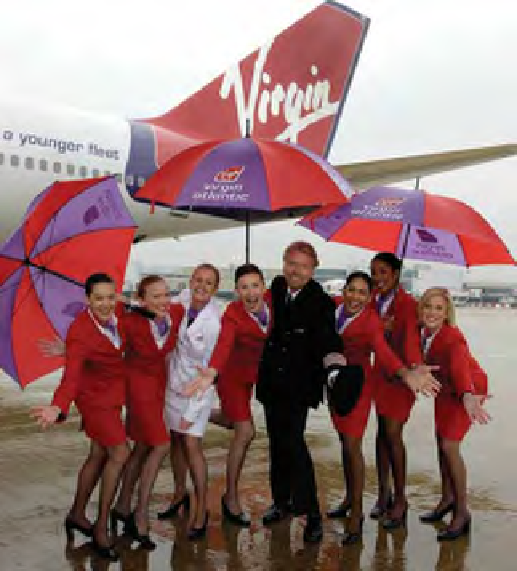Travel Reference
In-Depth Information
•
Cerebral roles - Plant, Monitor/Evaluator and
Specialist.
The value of Belbin's team role theory is that it allows
managers to allocate team members to roles that
match their personality and ways of working.
Lines of responsibility and channels
of communication
Whether working individually or as part of a team, clear
lines of responsibility and channels of communication
within organisations are essential if staff are to work to
the best of their ability. Management decision-making
and the day-to-day running of any travel and tourism
enterprise take place within its organisational structure.
All but the very smallest of organisations will need a
clearly-defi ned structure, in order to:
•
Defi ne the lines of communication between one
part of the organisation and another;
Teamwork at Virgin
•
Identify the channels of communication between
individuals working in the organisation;
with a small number of powerful individuals, below
which are many tiers of management. Sometimes
referred to as 'steep pyramids', these organisations are
sometimes criticised for being too bureaucratic, with
decisions having to pass through a number of channels
for confi rmation, thus slowing up decision-making.
Another common criticism of a centralised structure is
that senior management can seem very remote from
the workforce and out of touch with their everyday
concerns and problems.
•
Defi ne the sources of responsibility, authority,
decision-making and accountability within the
organisation;
•
Clarify
job
activities,
relationships
and
responsibilities;
•
Co-ordinate the organisation's activities to help
achieve its objectives;
•
Identify the pattern of control for the benefi t of
The shortcomings of a centralised approach have led
many travel and tourism organisations to consider an
alternative strategy, namely decentralisation or the 'fl at
pyramid', with less layers of bureaucracy within the
organisation, resulting in faster decision-making, better
communication, more senior management involvement
in day-to-day activities and a positive effect on staff
motivation and morale.
internal and external parties.
In small travel and tourism enterprises that operate as
sole traders or partnerships, the organisational structure
is likely to be simple, with matters such as the allocation
of duties, defi nition of responsibility and authority, and
relationships between members of staff being carried
out on an informal basis. Nonetheless, all travel and
tourism organisations, of whatever size or type, will
need some form of structure so that duplication of
effort is minimised and staff efforts and interactions are
co-ordinated effectively.
Equal opportunities
Having clear guidelines on equal opportunities helps
to create harmonious working relationships and
effective workplaces. There has been a steady growth
in recent years in the number of travel and tourism
Some organisations have very 'centralised' structures,
meaning that the power and decision making rest











































































